Did you know that crispy kangkong, also known as Asian crispy spinach or water spinach, is not only a popular dish in Asian cuisines but also a versatile and delicious veggie delight? With its crispy texture and Asian-inspired flavors, crispy kangkong is a snack or side dish that will leave you craving for more. In this article, I will share a variety of recipes and cooking tips to help you make the perfect crispy kangkong at home.
Key Takeaways:
- Crispy kangkong, also known as Asian crispy spinach or water spinach, is a versatile and delicious veggie delight.
- It is a popular dish in Asian cuisines thanks to its crispy texture and Asian-inspired flavors.
- In this article, I will share a variety of recipes and cooking tips to help you make the perfect crispy kangkong at home.
- Stay tuned to learn more about the delightful Filipino dish, Porbidang Kangkong, and how to make crispy kangkong with crispy fried pork.
- Discover the nutritional benefits of kangkong and how it can be incorporated into your cooking for a balanced diet.
The Delightful Filipino Dish: Porbidang Kangkong
Porbidang Kangkong is a delightful Filipino dish that combines the freshness of kangkong leaves and stalks with the rich flavors of coconut milk and vegetarian oyster mushroom sauce. It is a popular dish in the Bacolod region of the Philippines, known for its spiciness and bold taste. With only three key ingredients, kangkong, coconut milk, and siling labuyo (bird’s eye chili), it is a testament to the delicious flavors that can be created with minimal components.
Porbidang Kangkong is a dish that beautifully represents the culinary heritage of the Philippines. The combination of tender kangkong leaves and stalks with the creamy coconut milk and the savory vegetarian oyster mushroom sauce creates a symphony of flavors that instantly transports you to the vibrant streets of Bacolod.
The preparation of Porbidang Kangkong is simple yet rewarding. First, the kangkong leaves and stalks are blanched to retain their vibrant green color and crispness. Then, they are cooked in coconut milk and vegetarian oyster mushroom sauce, which infuse them with a rich and creamy flavor. Finally, the dish is finished with the fiery heat of siling labuyo, adding an extra kick to every bite.
This Filipino delicacy is a true masterpiece that showcases the versatility and creativity of Filipino cuisine. The combination of the fresh and healthy kangkong with the richness of the coconut milk and the umami flavors of the vegetarian oyster mushroom sauce creates a harmonious balance of taste and texture. Whether you’re a fan of spicy food or simply appreciate the complexity of flavors, Porbidang Kangkong is sure to satisfy your taste buds.
“Porbidang Kangkong is a mouthwatering dish that celebrates the unique flavors of Filipino cuisine. The combination of kangkong, coconut milk, and vegetarian oyster mushroom sauce creates a velvety and aromatic dish that is sure to delight both vegans and omnivores alike.”
Porbidang Kangkong Recipe
Here’s a simple recipe to help you recreate the flavors of Porbidang Kangkong in your own kitchen:
- Ingredients:
- 2 bunches of kangkong (water spinach), washed and trimmed
- 1 cup coconut milk
- 1/4 cup vegetarian oyster mushroom sauce
- 2 siling labuyo (bird’s eye chili), chopped (adjust according to your spice preference)
- Bring a pot of water to a boil and blanch the kangkong for about 1 minute. Drain and set aside.
- In a separate pan, heat the coconut milk over medium heat.
- Add the vegetarian oyster mushroom sauce and stir until well combined.
- Add the blanched kangkong and cook for another 2 minutes, allowing the flavors to meld together.
- Add the chopped siling labuyo and cook for an additional minute.
- Remove from heat and serve hot.
With this recipe, you can enjoy the authentic flavors of Porbidang Kangkong right in your own home. Serve it as a side dish or as a main course with steamed rice for a truly satisfying meal.
Discover the unique taste of Porbidang Kangkong and savor the flavors of the Philippines. Let this delightful Filipino dish take you on a culinary journey you won’t forget.
| Ingredients | Quantity |
|---|---|
| Kangkong (water spinach) | 2 bunches |
| Coconut milk | 1 cup |
| Vegetarian oyster mushroom sauce | 1/4 cup |
| Siling labuyo (bird’s eye chili) | 2, chopped (adjust according to your spice preference) |
Apan – Apan: Adobong Kangkong with Crispy Fried Pork
Apan – Apan is a delectable version of Adobong kangkong, a beloved Ilonggo dish hailing from the Western Visayas region of the Philippines. This delightful dish combines the vibrant flavors of kangkong leaves with the satisfying crunch of crispy fried pork, creating a harmony of textures and tastes that will leave you craving for more.
The star of Apan – Apan is the kangkong, also known as water spinach, which is stir-fried to perfection. Alongside the crispiness of fried pork, this dish features a medley of aromatic ingredients such as garlic, onions, bagoong alamang (shrimp paste), vinegar, and soy sauce, adding depth and complexity to the flavors.
The crispy fried pork not only adds a delightful crunch to each bite but also enhances the overall experience with its savory and rich taste. The bagoong alamang brings a delightful umami flavor, complementing the freshness of the kangkong leaves. The combination of these ingredients creates a tantalizing blend that is sure to please your palate.
Recipe for Apan – Apan: Adobong Kangkong with Crispy Fried Pork
To create the perfect Apan – Apan at home, follow this simple recipe:
- Heat vegetable oil in a pan and fry thinly sliced pork until crispy. Set aside.
- Sauté minced garlic and chopped onions until fragrant.
- Add kangkong leaves and stir-fry until wilted.
- In a separate bowl, mix bagoong alamang, vinegar, and soy sauce.
- Pour the sauce mixture into the pan and stir-fry until well combined.
- Top the kangkong with the crispy fried pork.
- Serve hot with steamed rice.
Indulge in the flavorful combination of tender kangkong leaves, crispy fried pork, and umami-rich sauce. This satisfying dish is a perfect accompaniment to a steaming bowl of rice, providing a hearty and delicious meal that will surely please your taste buds.
Try making Apan – Apan at home and savor the unique flavors of this traditional Ilonggo dish!
The Nutritional Benefits of Kangkong
Kangkong, also known as water spinach or Chinese watercress, is not only a flavorful addition to your meals but also a highly nutritious leafy vegetable. It offers a range of health benefits, making it a valuable ingredient to incorporate into your diet.
Kangkong is rich in essential vitamins and minerals that support overall well-being. It is a great source of Vitamin A, which is important for maintaining healthy vision, supporting the immune system, and promoting cell growth and development. Vitamin C is another key nutrient found in kangkong, known for its antioxidant properties that protect the body against oxidative stress, boost collagen production, and enhance iron absorption.
A Nutrient-Rich Powerhouse
Aside from vitamins, kangkong also packs a punch when it comes to minerals. It is particularly abundant in iron, an essential mineral needed for the production of red blood cells and transportation of oxygen throughout the body. Calcium, another vital mineral found in kangkong, promotes strong bones and teeth, nerve function, and muscle contraction.
The table below provides a summary of the key vitamins and minerals found in kangkong:
| Nutrient | Function | Benefits |
|---|---|---|
| Vitamin A | Supports vision and the immune system | Healthy eyes, improved immune function |
| Vitamin C | Antioxidant, collagen production, iron absorption | Reduced oxidative stress, enhanced skin health, improved iron utilization |
| Iron | Production of red blood cells, oxygen transport | Prevents anemia, increased energy levels |
| Calcium | Strong bones and teeth, nerve function, muscle contraction | Enhanced bone health, improved nerve signaling and muscle function |
By including kangkong in your meals, whether stir-fried, steamed, or used in soups and stews, you can boost your nutrient intake and enjoy the health benefits it provides. It adds a refreshing and wholesome element to your dishes, making them both delicious and nourishing.
So, let’s embrace the goodness of kangkong and make it a regular part of our meals. Not only will it enhance the flavors of our dishes, but it will also contribute to a balanced and nutrient-rich diet.
Cooking with Kangkong: Versatility and Flavor
Kangkong is an incredibly versatile ingredient that can be prepared in various ways to suit your culinary preferences. It is a staple in many Asian cuisines, where it adds a burst of flavor and freshness to a range of dishes.
One popular way to prepare kangkong is through stir-frying. Simply toss the kangkong leaves with garlic, chili, and a splash of soy sauce in a hot wok or skillet. The result is a simple and delicious side dish that pairs well with almost any Asian meal. The combination of stir-fried kangkong with the aromatic garlic and the kick of chili creates a flavorful and vibrant dish.
If you’re looking for a lighter option, steaming or blanching kangkong is a great choice. Simply place the kangkong in a steamer or blanch it in boiling water for a few minutes until it becomes tender. Once cooked, drizzle the kangkong with a touch of sesame oil for added flavor. This method brings out the natural sweetness of the kangkong while preserving its vibrant green color.
Kangkong also shines in soups and stir-fried noodle dishes. It adds a fresh and crunchy element to the overall flavor profile, making these dishes more satisfying and appetizing. Whether you’re whipping up a comforting bowl of noodle soup or creating a hearty stir-fry, kangkong is a fantastic addition that elevates the dish to a whole new level.
To inspire your culinary adventures with kangkong, here are some delicious recipe ideas:
Kangkong and Tofu Stir-Fry
- Ingredients:
- – Kangkong leaves, tofu, garlic, soy sauce, oyster sauce
- Instructions:
- 1. Heat oil in a wok or skillet.
- 2. Add minced garlic and stir-fry until fragrant.
- 3. Add tofu and cook until lightly browned.
- 4. Add kangkong leaves and stir-fry for a few minutes until wilted.
- 5. Season with soy sauce and oyster sauce, and stir-fry for another minute.
- 6. Serve hot with steamed rice.
Steamed Kangkong with Garlic
- Ingredients:
- – Kangkong leaves, garlic, sesame oil, salt
- Instructions:
- 1. Arrange kangkong leaves on a steaming plate.
- 2. Finely chop garlic and sprinkle it over the leaves.
- 3. Drizzle sesame oil on top and season with a pinch of salt.
- 4. Steam for 5-8 minutes, or until the kangkong leaves are tender.
- 5. Serve as a light and healthy appetizer.
Kangkong Noodle Soup
- Ingredients:
- – Kangkong leaves, noodles, chicken or vegetable broth, sliced chicken or tofu, ginger, garlic, soy sauce
- Instructions:
- 1. In a pot, heat oil and sauté minced ginger and garlic.
- 2. Add sliced chicken or tofu and cook until cooked through.
- 3. Pour in chicken or vegetable broth and bring to a boil.
- 4. Add noodles and cook according to package instructions.
- 5. Stir in kangkong leaves and simmer for a few minutes until wilted.
- 6. Season with soy sauce to taste.
- 7. Serve hot and enjoy!
As you explore the world of kangkong in your kitchen, let your creativity run wild. Experiment with different cooking methods, seasonings, and ingredients to discover unique and mouthwatering combinations. From stir-fries to soups, steamy delights to crunchy side dishes, kangkong adds a distinct touch of Asian flavor to any dish.
How to Make Crispy Kangkong
Making crispy kangkong at home is refreshingly easy. To make the dish, you will need kangkong leaves, vegetable oil for frying, and a batter made from flour, cornstarch, salt, and water. The kangkong leaves are coated in the batter and then deep-fried until crispy. The result is a delicious and addictive snack that can be enjoyed on its own or dipped in your favorite sauce.
Ingredients for Crispy Kangkong:
- Kangkong leaves
- Vegetable oil for frying
- Batter made from flour, cornstarch, salt, and water
Instructions:
- In a bowl, combine the flour, cornstarch, salt, and water to create a smooth batter.
- Heat vegetable oil in a deep skillet or pot.
- Dip each kangkong leaf into the batter, ensuring it’s fully coated.
- Carefully place the coated kangkong leaves into the hot oil, frying in small batches.
- Fry until crispy and golden brown, about 2-3 minutes.
- Remove the crispy kangkong from the oil and drain on a paper towel to remove excess oil.
- Repeat the process with the remaining kangkong leaves.
- Serve the crispy kangkong immediately as a snack or as a side dish.
Enjoy the crispy and addictive texture of homemade kangkong fries, perfect for sharing with family and friends.
Tips and Tricks for Perfect Crispy Kangkong
To achieve the perfect crispy kangkong, it’s important to follow a few tips and tricks.
- Ensure Dry Leaves: Before coating the kangkong leaves in the batter, make sure they are completely dry. This will prevent any splattering during frying and ensure a crispy texture.
- Choose a Neutral Oil: For deep-frying kangkong, it’s best to use a neutral oil with a high smoke point, such as vegetable oil. This will help achieve a crispy and golden exterior.
- Fry in Small Batches: To ensure even cooking and maximum crispiness, fry the kangkong leaves in small batches. Overcrowding the pan can lead to uneven cooking and soggy results.
By following these tips and tricks, you’ll be able to achieve a crunchy and flavorful crispy kangkong that will delight your taste buds.
| Cooking Method | Texture | Flavor | Level of Difficulty |
|---|---|---|---|
| Deep-frying | Extra crispy | Rich and savory | Intermediate |
| Baking | Crunchy | Mild and subtle | Easy |
| Air-frying | Crispy | Light and airy | Easy |
Health Benefits of Kangkong
Kangkong, also known as water spinach or Chinese watercress, is not only a delicious vegetable but also a nutritional powerhouse. Incorporating kangkong into your diet can provide you with significant health benefits. Let’s explore the key nutrients and their advantages.
Vitamins A and C for Immune Function and Healthy Skin
Kangkong is a good source of vitamins A and C. Vitamin A acts as an antioxidant, supporting immune function and promoting healthy vision. It also plays a crucial role in maintaining the integrity of skin and mucous membranes.
On the other hand, vitamin C is known for its immune-boosting properties. As a powerful antioxidant, it helps protect against harmful free radicals and supports the body’s natural defense system. Additionally, vitamin C is necessary for collagen production, contributing to the health and elasticity of the skin.
Iron for Red Blood Cell Production
Iron is an essential mineral that plays a vital role in the production of red blood cells. These cells transport oxygen throughout the body, ensuring proper organ function and overall vitality. Incorporating kangkong, which contains iron, into your diet can help prevent iron deficiency anemia and promote optimal blood health.
Calcium for Strong Bones and Teeth
Calcium is crucial for maintaining strong bones and teeth. It is especially important during childhood and adolescence when bone development is at its peak. Kangkong is a natural source of calcium, making it an excellent addition to your diet if you want to support bone health and prevent conditions like osteoporosis.
“By incorporating kangkong into your diet, you can enjoy these health benefits while savoring its unique flavor.”
Summary of Health Benefits
Kangkong offers a range of health benefits, thanks to its rich nutritional composition. Here’s a quick summary:
- Provides vitamins A and C for immune function and healthy skin
- Contains iron for red blood cell production
- Offers calcium for strong bones and teeth
Incorporating kangkong into your diet allows you to harness these health benefits while enjoying its unique taste. So why not explore the various delicious and nutritious ways to prepare kangkong in your meals?
Cooking Kangkong for a Balanced Diet
Including kangkong in your cooking repertoire can contribute to a balanced diet. Its nutritional profile, including vitamins, minerals, and dietary fiber, makes it a nutritious addition to your meals. You can experiment with different recipes that feature kangkong, such as stir-fries, soups, salads, and wraps. By incorporating kangkong into your cooking, you can create healthy and flavorful dishes that support your overall well-being.
Stir-fries:
Kangkong is a versatile ingredient that adds a refreshing crunch to stir-fries. Whether you’re preparing a classic garlic kangkong stir-fry or experimenting with a spicy chili and soy sauce version, these recipes are quick, easy, and packed with flavor.
Soups:
Enhance the nutritional value of your soups by adding kangkong. Whether you’re making a hearty vegetable soup or a comforting chicken broth, kangkong can provide a vibrant green element while adding vitamins and minerals to your bowl.
Salads:
Kangkong can be used as the base for a refreshing salad. Combine it with other vegetables, such as cherry tomatoes, cucumbers, and bell peppers, and dress it with a tangy vinaigrette for a light and nutritious meal.
Wraps:
For a healthy and portable meal option, use kangkong as a wrapper. Fill it with grilled chicken, tofu, or shrimp, along with your favorite veggies and condiments, for a satisfying and wholesome wrap.
Incorporating kangkong into your cooking not only adds nutritional value but also introduces a unique flavor and texture to your meals. Whether you’re craving a stir-fry, soup, salad, or wrap, kangkong can be your go-to ingredient for creating a balanced and delicious dish.
Where to Buy Kangkong
Kangkong, also known as water spinach, is a versatile and nutritious vegetable that can be found in various locations. If you’re wondering where to buy kangkong, here are some options:
- Asian grocery stores and markets: These stores often carry a wide range of Asian ingredients, including fresh kangkong. Look for the vegetable section, where you’ll find kangkong with its vibrant green leaves and firm stems.
- Local farmers’ markets: Supporting local farmers is not only environmentally friendly but also a great way to access fresh produce. Check out your nearest farmers’ market, where you might find freshly harvested kangkong.
- Specialty produce stores: Some specialty stores focus on providing high-quality fresh produce to their customers. These stores may have kangkong in stock, so it’s worth checking them out.
- Online retailers: If you prefer the convenience of online shopping, you can explore various online retailers that offer fresh or frozen kangkong. This option allows you to have kangkong delivered straight to your doorstep.
Regardless of where you choose to buy kangkong, make sure to look for fresh and vibrant green leaves with firm stems. This ensures that you’re getting the best quality kangkong for your culinary adventures.
How to Store Kangkong
Properly storing kangkong, also known as water spinach, is essential to maintain its freshness and extend its shelf life. By following these simple storage tips, you can ensure that your kangkong stays crisp and ready to use whenever you need it.
Remove Damaged Leaves and Trim Stems
Before storing kangkong, take a moment to inspect the leaves and discard any damaged or wilted ones. Trim the ends of the stems as well to promote better hydration and prevent moisture loss.
Wrap or Bag for Freshness
To keep your kangkong fresh and prevent it from drying out in the refrigerator, you have two options. You can either wrap it in a damp paper towel or place it in a plastic bag. Both methods help maintain the moisture level and ensure optimal freshness.
Note: Avoid washing kangkong before storing, as excess moisture can cause it to spoil more quickly. It’s best to wash it just before use.
Refrigerator Storage
To store kangkong, place it in the refrigerator crisper drawer, where the temperature and humidity are ideal for maintaining its quality. Storing kangkong in the crisper drawer helps prevent it from getting crushed or exposed to excessive cold that can damage the leaves.
Duration of Freshness
When stored properly, kangkong can stay fresh in the refrigerator for up to a week. However, it is always best to use it as soon as possible to enjoy its optimal taste and nutritional value.
Remember to use kangkong within a reasonable time frame and discard any that shows signs of spoilage or decay.
To summarize:
- Remove damaged leaves and trim stems.
- Wrap in a damp paper towel or place in a plastic bag.
- Store in the refrigerator crisper drawer.
- Use within a week for the best quality.
By following these storage tips, you can prolong the shelf life of your kangkong and enjoy its fresh and vibrant flavors in your favorite recipes.
Conclusion
If you’re looking for a unique and delicious veggie delight, look no further than crispy kangkong. This popular dish in Asian cuisines offers a crunchy texture and Asian-inspired flavors that make it enjoyable as a snack or a side dish. Whether you prefer the traditional Porbidang Kangkong, the flavorful Apan – Apan, or the crispy deep-fried version, there are endless culinary possibilities with kangkong.
Not only does crispy kangkong satisfy your taste buds, but it also provides various health benefits. With its nutritional profile rich in vitamins A and C, iron, and calcium, kangkong contributes to a balanced and nourishing meal. Incorporating this nutritious vegetable into your cooking can support overall well-being and add a refreshing and wholesome element to your meals.
So why not give crispy kangkong a try and elevate your meals with this satisfying and nutritious vegetable? Whether you’re an adventurous cook or a health-conscious individual, crispy kangkong is sure to impress. Explore different recipes, experiment with flavors, and enjoy the delightful experience of crispy kangkong.

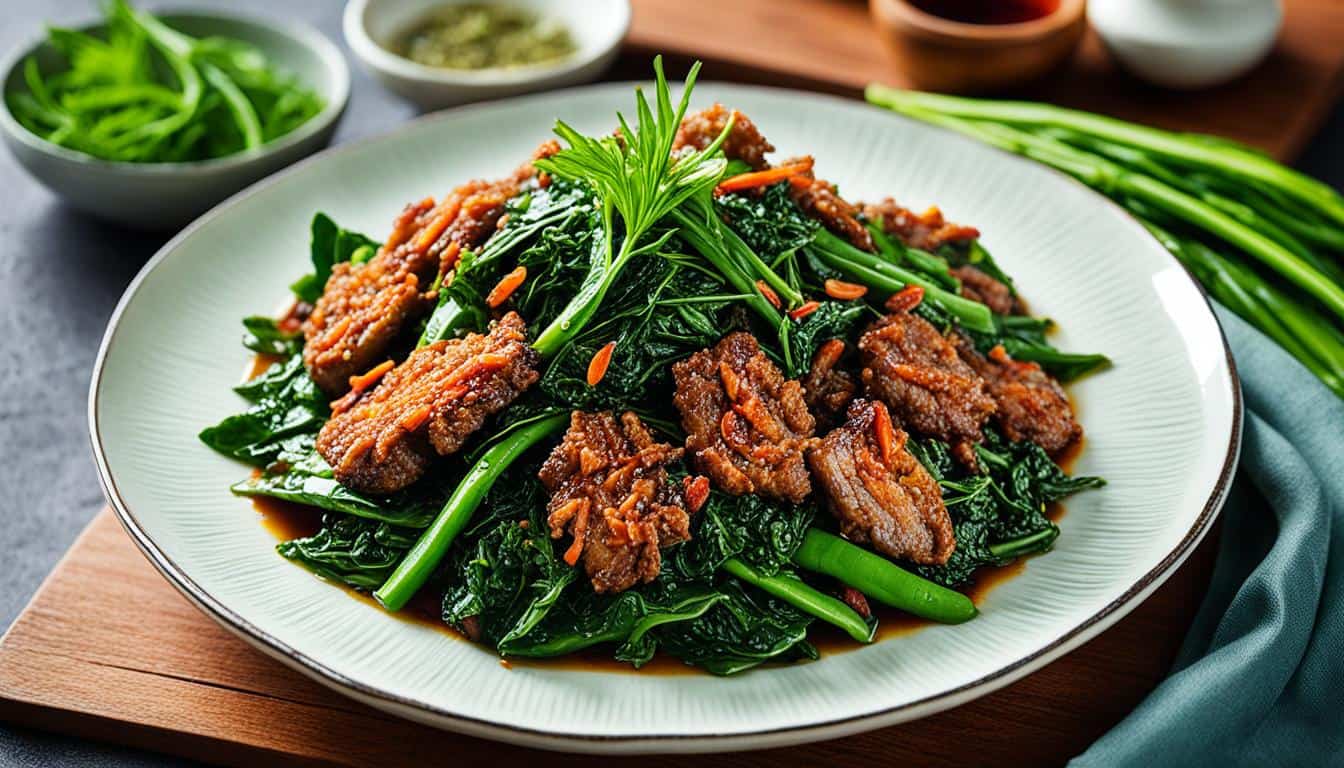
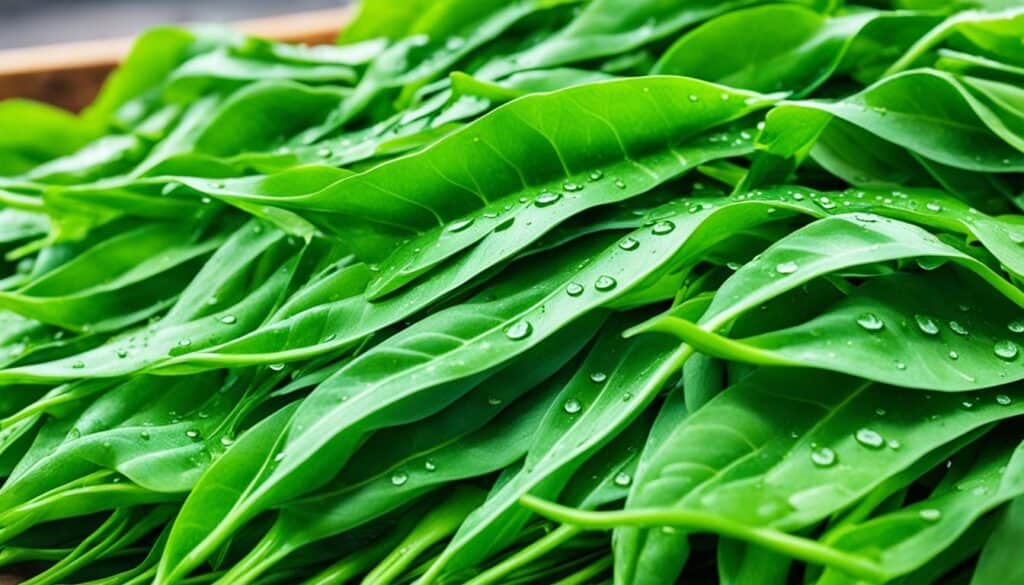
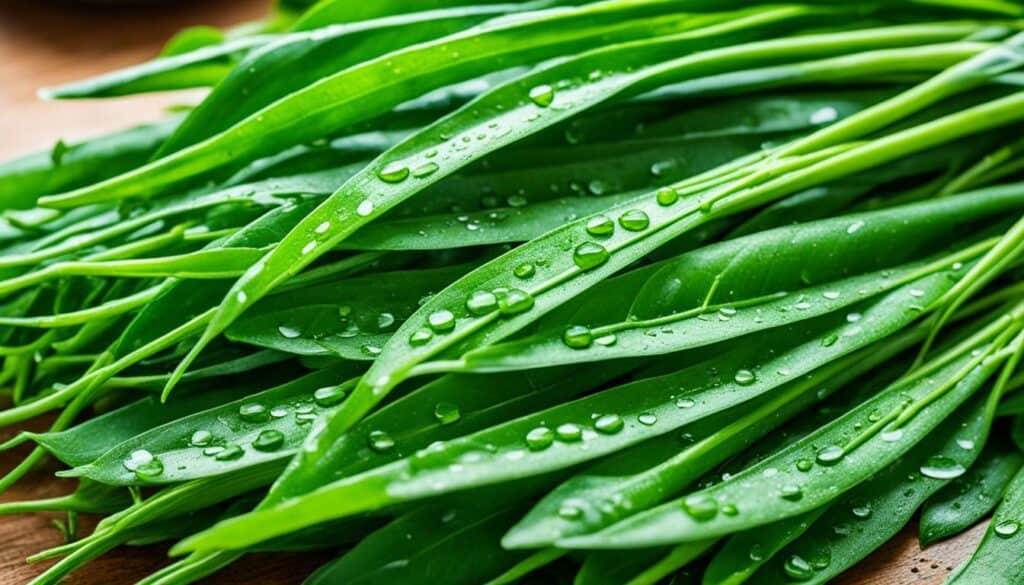
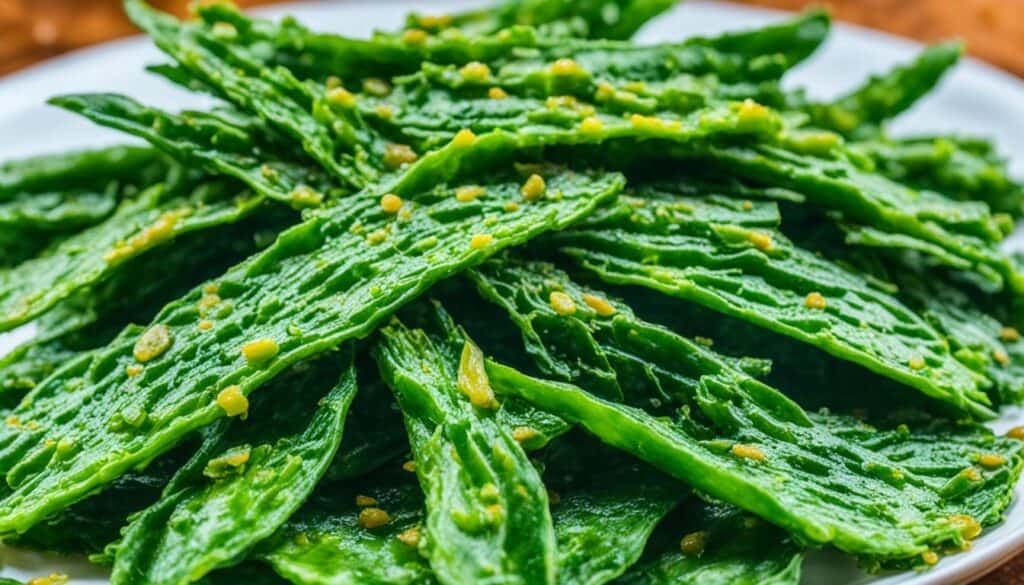
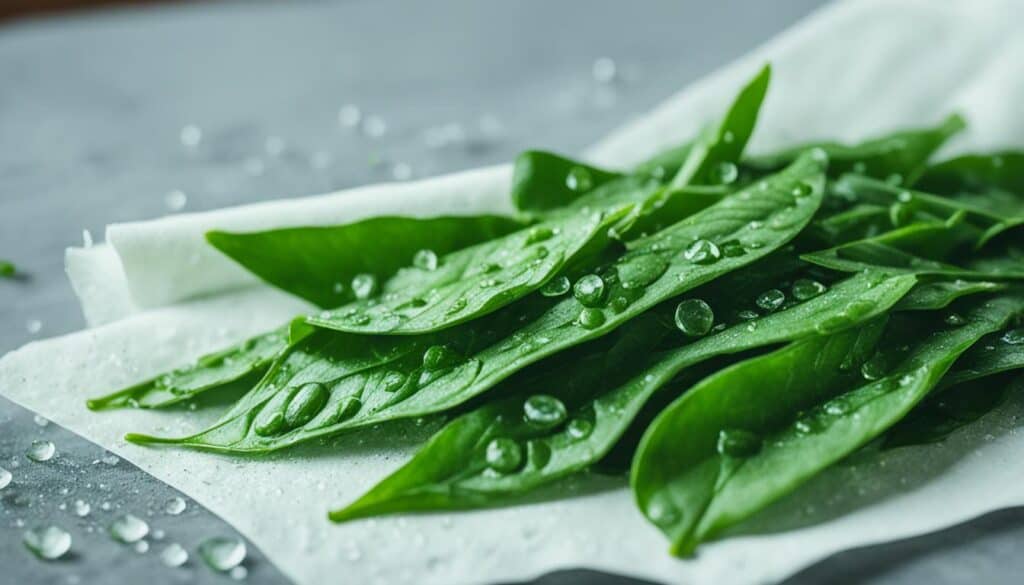
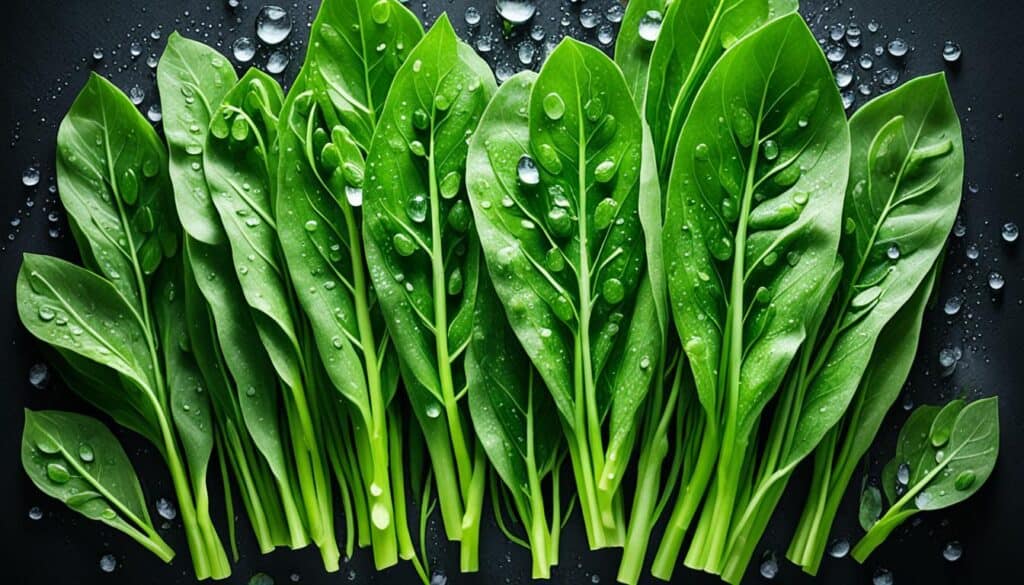

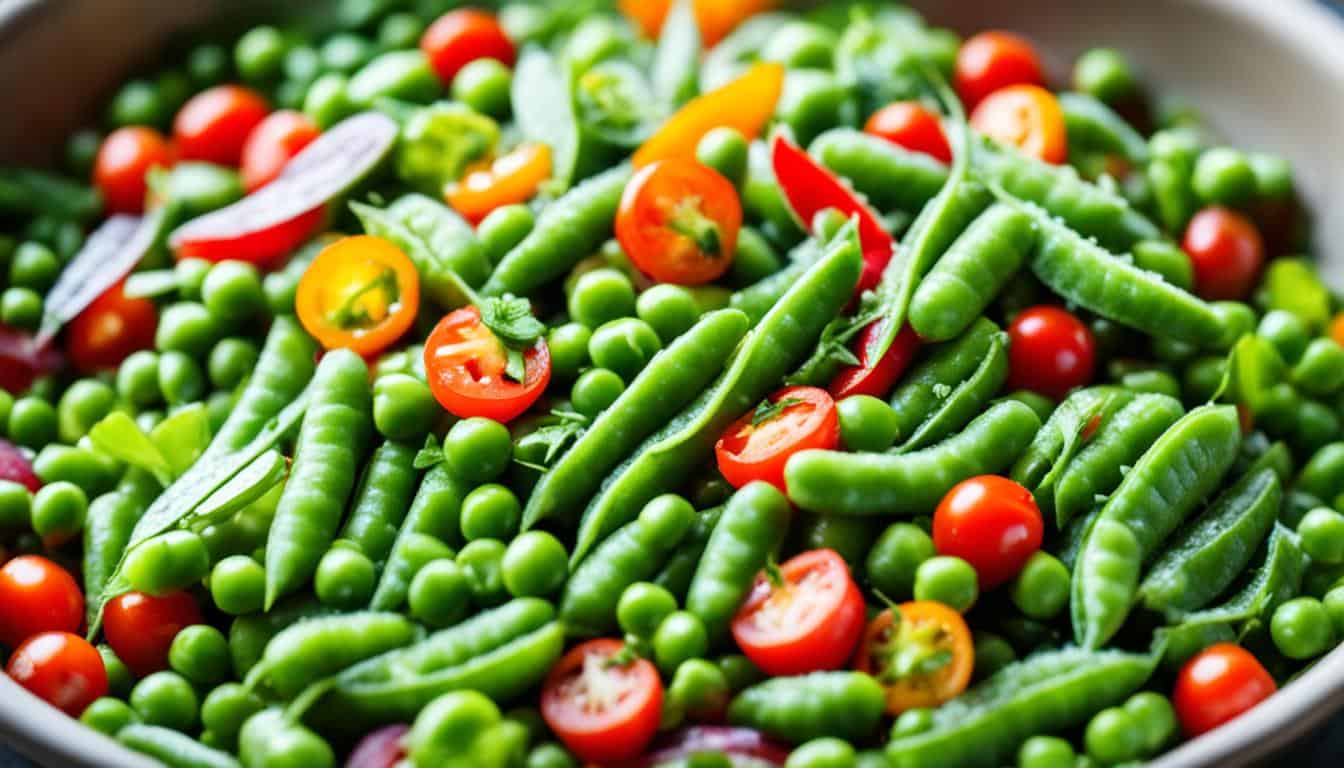
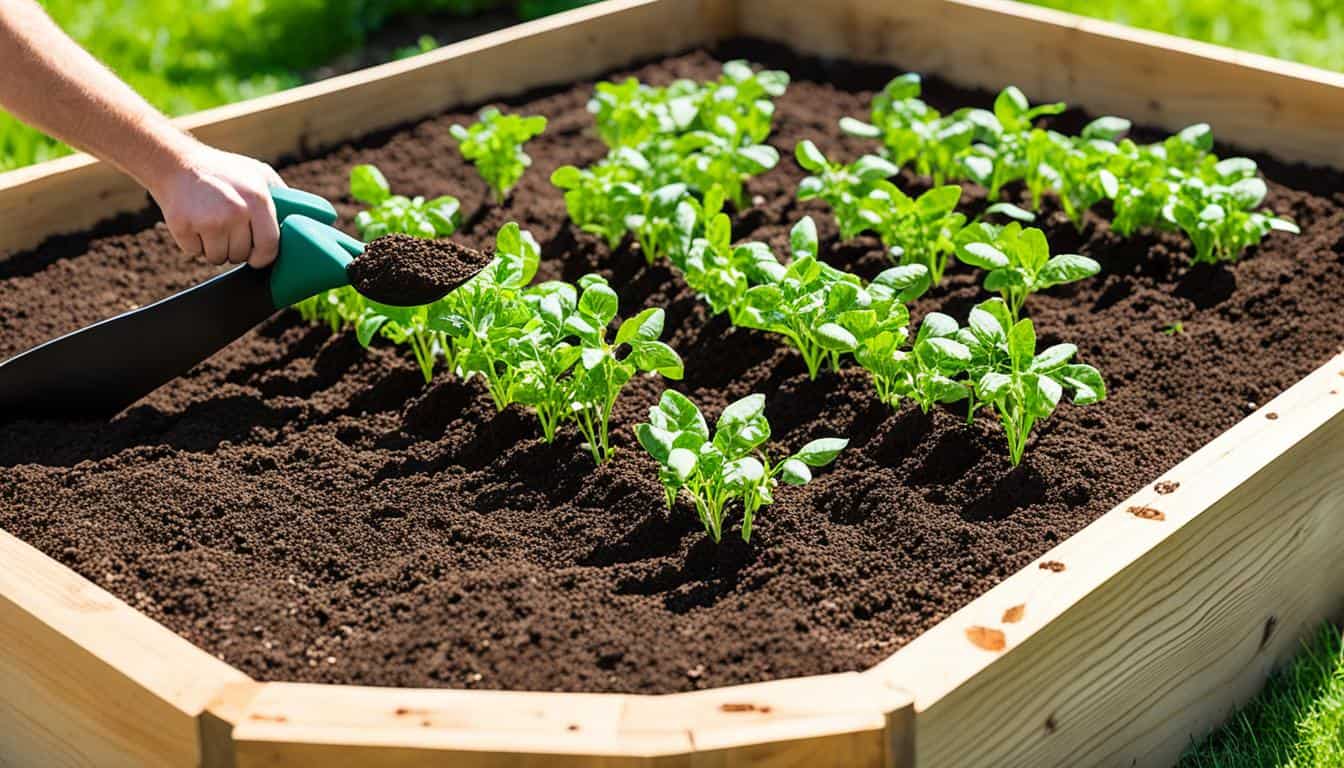
Leave a Reply